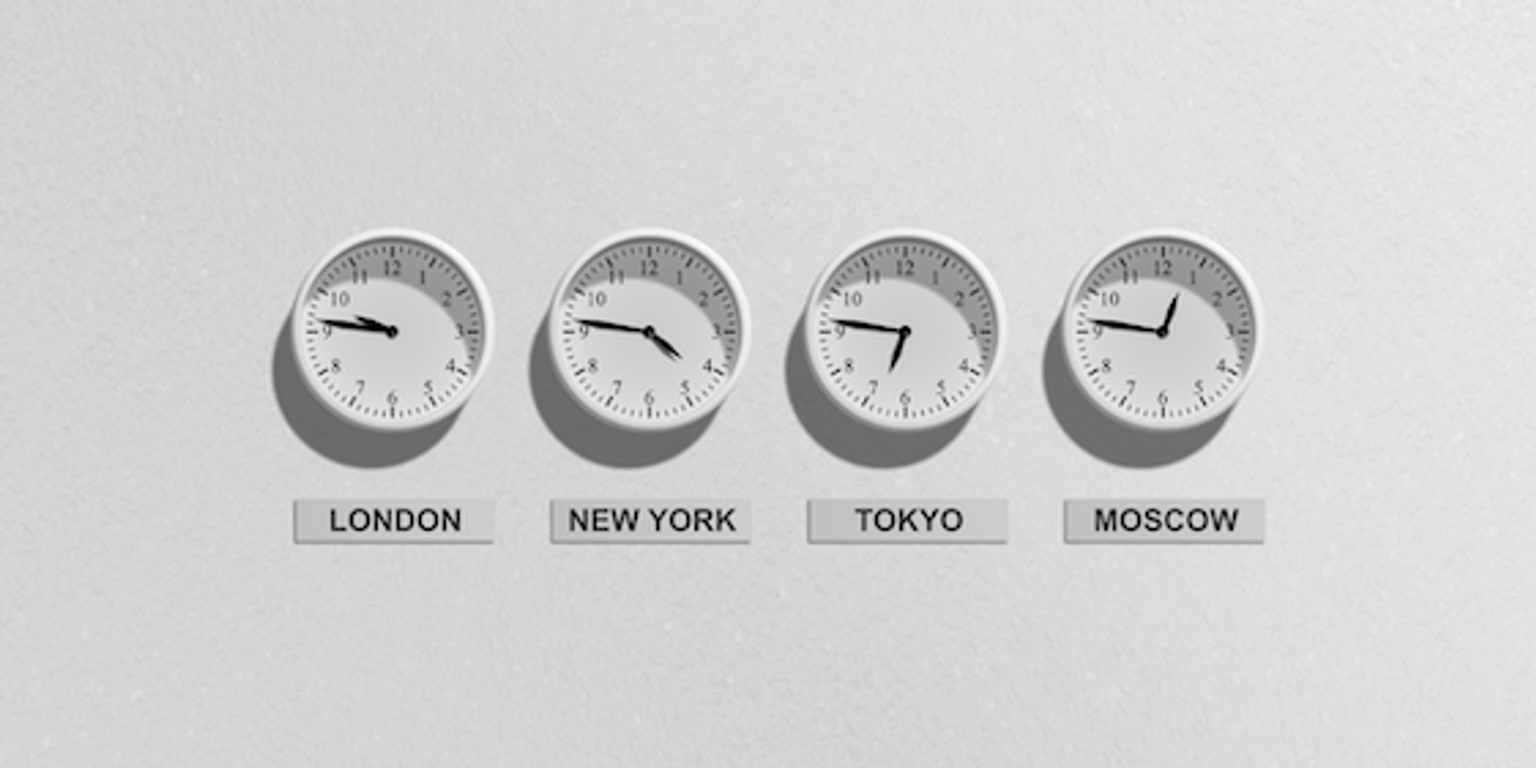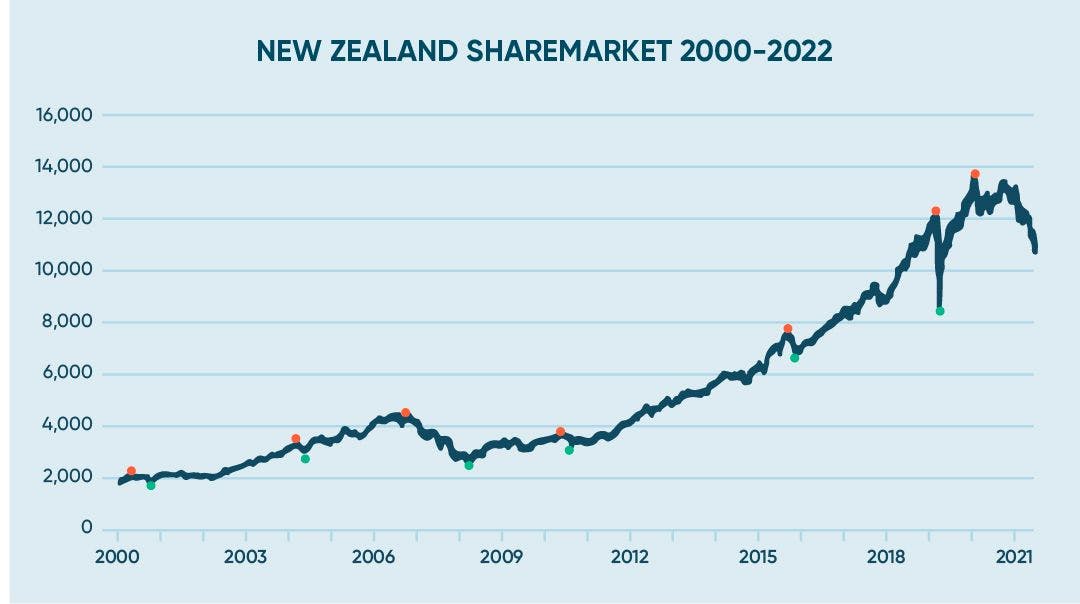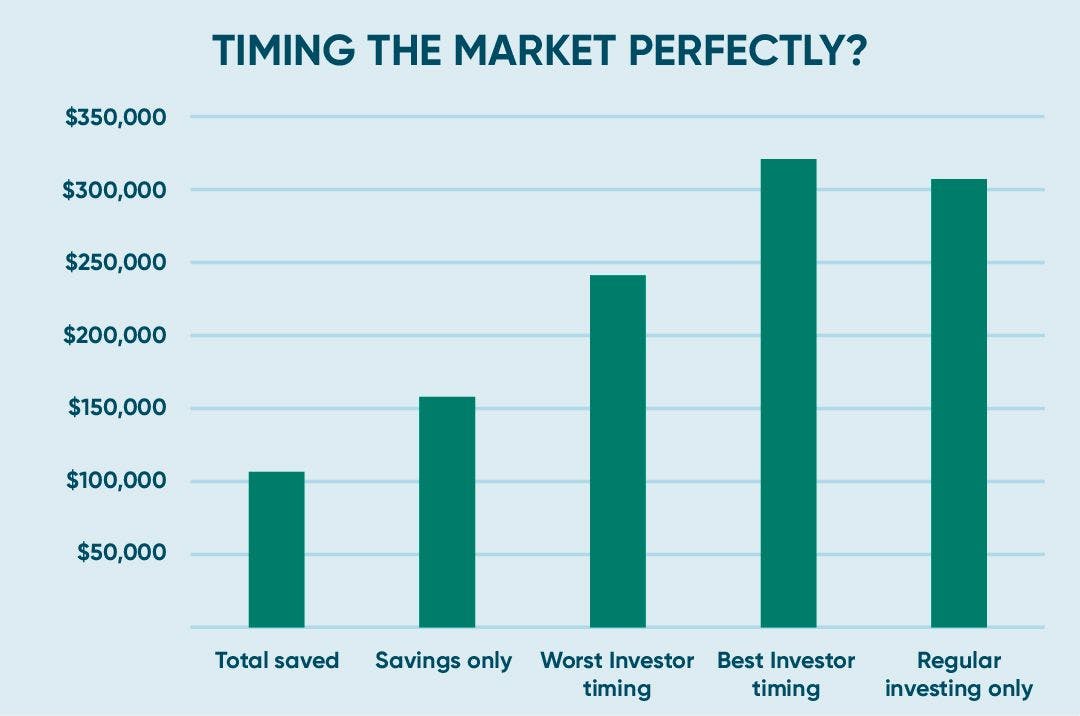7 Things to Consider When Choosing the Right Index Fund
There are hundreds of indices and many different funds available, so how do you choose the right ind...

Dean Anderson
10 June 2020

We often hear from investors that they are worried about timing the market. What if they invest and the next crash or recession is imminent? The potential for loss is uncomfortable.
You will always find someone who thinks the market is too hot or cold right now and market prices are ultimately driven by investor sentiment. So we thought we would demonstrate how to perfectly time the markets…
Imagine on New Years' Eve 2000, you made the resolution to save for the future by putting aside $100 per week. You had two options; a savings account earning a constant 2% per year, or an index fund tracking the NZ stock market with its fluctuating returns.
By 30 June 2022, you would have saved exactly $110,400. You chose to invest in an index fund and once you bought, you never sold and you always reinvested the quarterly distributions. This is because the investment is for your retirement or some long-term goal that didn’t change. However, you might be wondering whether you could have chosen your moments better.
Let’s look at a few different strategies based on when you jumped into the market and how you would fare today including tech bubbles, Global Financial Crisis, and the ongoing COVID pandemic.
So, what if you held your money in a savings account until it was the perfect time to invest. After all, in hindsight, there were seven periods of greater than 10% “correction” between 2001 and today, shown below between the red and green dots.

If you got it absolutely right and invested at the exact low point of the market (each green dot), your investment would be $333,605 today. This meant investing all the saved cash on September 17, 2001. Less than one week after 9/11 and then again on five ‘ideal’ days, including the days NZ went into lockdown due to the COVID pandemic. It can’t be overstated how hard it is to predict the bottom of a market and the perfect hindsight required!
By contrast, what if you got it spectacularly wrong and invested your saved balance on every red-dot day? Investing on the seven market peaks only for a significant fall to begin the following day including the current bear market – your investment would today be worth $243,729. Not as good, but almost double the $138,048 you would have from the 2% savings account alone.
As an aside, given interest rates have recently increased, if you received the 90-day bank bills rate for the past 21 years, you would have $158,332.
How about a third approach – what if you just invested without any thought to timing, choosing an automatic approach?
On the very first day, you started putting your savings to work by automatically investing each week into an index fund. Then you rarely looked at your account again. Whether you knew it or now, and hindsight is wonderful, you consistently invest whether it turned out to be a market peak or market bottom. Today your balance would be $309,488; only 7.7% off the theoretical perfect timing over 21 years.
While many people try to convince you they can predict the future, as the adage goes,
It’s time in the market, not timing the market that gives the best results.
If you’re worried the market is too risky or too high, or the future is too uncertain, instead think about the things you can control. Why am I investing? When do I need to use this money? Then set up an investment plan that works for you – because your goals can’t wait, but emotive headlines can.

7 Things to Consider When Choosing the Right Index Fund
There are hundreds of indices and many different funds available, so how do you choose the right ind...

Dean Anderson
10 June 2020
Picking stocks is hard – so how should you do it?
Some would argue that now is a pretty good time to invest, but picking stocks is really hard. Read o...

Dean Anderson
29 March 2020
The majority of active managers underperform most of the time. This happens for a set of readily ide...

Catherine Emerson
24 October 2020
For market updates and the latest news from Kernel, subscribe to our newsletter. Guaranteed goodness, straight to your inbox.
Indices provided by: S&P Dow Jones Indices